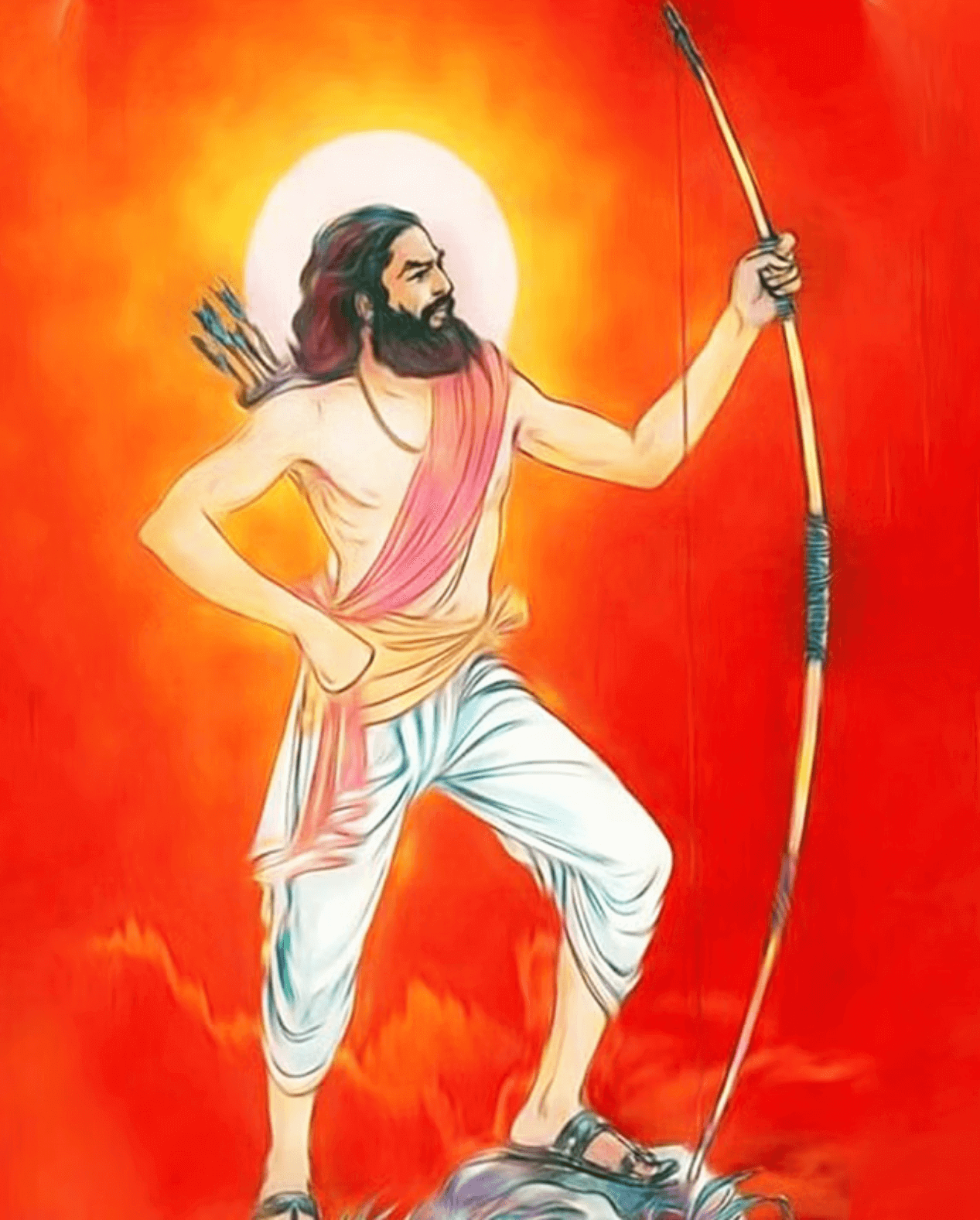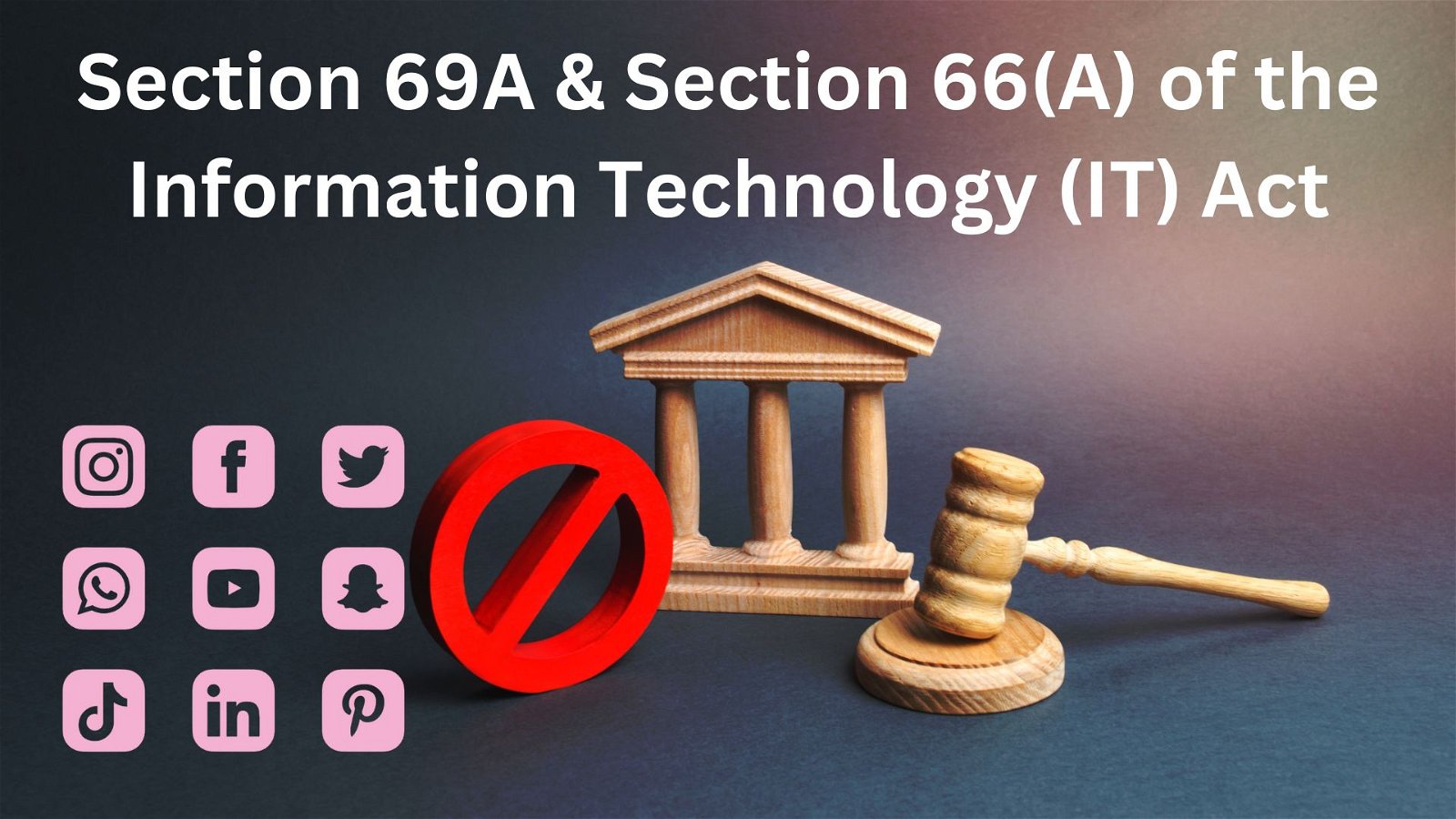
Current Affairs February 24, 2024: Badami Chalukya Temples discovered, Guru Ravidas, Ladakh Protests, Grey Warfare, Super Pollutants, State sponsored Cyber Warfare, Asian Giant Softshell Turtle, T-50 Tunnel, Turha
Subscribers of "Current Affairs" course can Download Daily Current Affairs in PDF/DOC
Subscribe to Never Miss an Important Update! Assured Discounts on New Products!
Must Join PMF IAS Telegram Channel & PMF IAS History Telegram Channel
{GS1 – A&C – Architecture} Badami Chalukya Temples discovered
- Context (TOI): Two Badami Chalukya temples at least 1,300-1,500 years old and a 1,200-year-old label inscription were recently discovered in Mudimanikyam village along the banks of River Krishna in Nalgonda district, Telangana.
- These temples are exceptional as they are in Kadamba Nagara style in the Rekha Nagara format.
- The label inscription, dating back to 8th or 9th century AD, also from the Badami Chalukya period, reads as ‘Gandaloranru’ and is inscribed on a pillar of a group of five temples in the village.

Chalukya Dynasty
- Chalukyas ruled over central Indian plateau of the Deccan from 6th and 12th century.
- It is mainly divided into 3 dynasties and ruled individually even though all were related to each other.
- Chalukya’s of Badami
- Chalukya’s of Vengi/ Eastern Chalukya’s
- Chalukya’s of Kalyani/ Western Chalukya’s
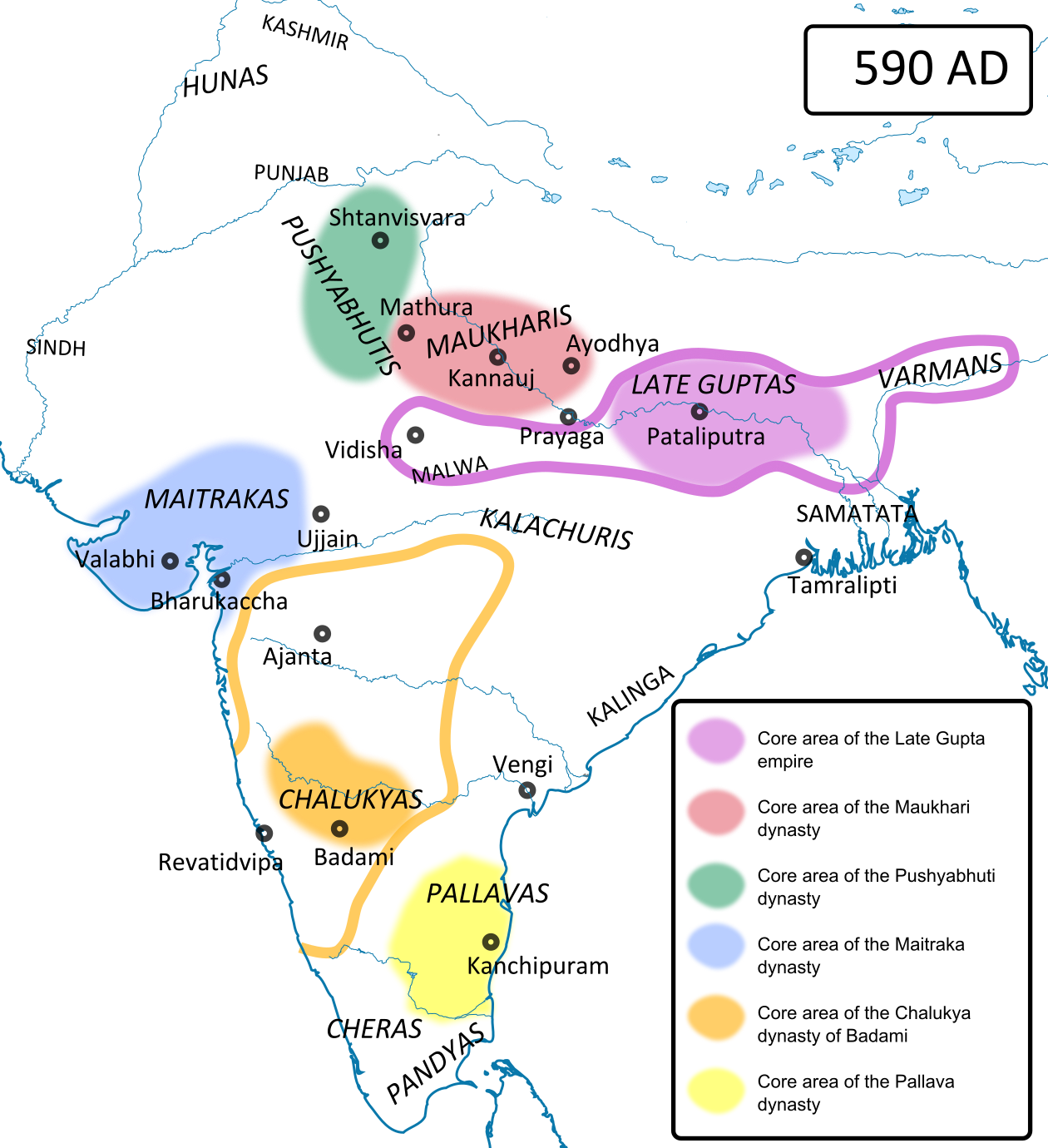
Chalukyas of Badami
- Pulakesin I established the Chalukya dynasty in 550.
- He made Badami or Vatapi as his capital.
- He adopted the title Vallabheshvara and performed the ashvamedha.
- He was succeeded by Kirtivarman I (566-597) who further extended the kingdom by defeating the Mauryas of North-Konkana, the Nalas of Nalavadi (Bellari) and the Kadambas of Banavasi.
- It was, however, in the reign of Pulakesin II (609-42 CE) that the Chalukya territory expanded to a large extent.
- Pulakesin II came head-on against his greatest northern adversary, Harsha of Kanauj, who was planning to attack the Deccan and won a decisive victory on the banks of the Narmada.
- Ravikirti’s Aihole inscription speaks in detail the victory of Pulakesin II over Harsha. After the victory, Pulakesin II assumed the title of Parameshvara (Supreme Lord).
- He then defeated the Vishnukundins in the southeastern Deccan.
- Hiuen-Tsang, a Chinese traveller, visited the court of Pulakesin II.
- Later, Persian emperor Khosrau II exchanged ambassadors with Pulakesin II.
- The Pallava King Narasimhavarman I (A.D. 630-668) occupied the Chalukya capital at Vatapi in about 642 A.D., when Pulakesin II was probably killed in fight against the Pallavas.
- The Badami Chalukya dynasty went into a brief decline following the death of Pulakesin II due to internal feuds.
- The Chalukyan rule in Badami was replaced by the Rashtrakutas in about 750 CE when Rashtrakuta feudatory Dantidurga gave a final blow and defeated the Chalukyan king Kirtivarman II.
Art & Architecture
- More than 150 monuments attributed to the Badami Chalukya, and built between 450 and 700, remain in the Malaprabha basin in Karnataka.
- The rock-cut temples of Pattadakal, a UNESCO World Heritage Site, Badami and Aihole constitute their most celebrated monuments.
- In Aihole, the Durga temple (sixth century), Ladh Khan temple (450), Meguti temple (634), Hucchimalli and Huccappayya temples (fifth century), Badami Cave Temples (600) provide examples of early Chalukyan art.
Land Governance & Polity
- The empire was divided into Maharashtrakas (provinces), then into smaller Rashtrakas (Mandala), Vishaya (district), Bhoga (group of ten villages) similar to Dasagrama unit of Kadambas.
- Many autonomous regions existed ruled by feudatories like Alupas, Gangas, Banas, and Sendrakas.
- Local assemblies looked after local issues.
- Groups of mahajanas (learned brahmins), looked after agraharas (like Ghatika or place of higher learning) like the ones at Badami (2000 mahajans) and Aihole (500 mahajanas).
Society
- The Hindu caste system appeared and the government recognized prostitution.
- Sati may have been absent as widows like Vinayavathi and Vijayanka are mentioned in records.
- Women enjoyed political power in administration. Queens Vijayanka, a noted Sanskrit poetess; Kumkumadevi, the younger sister of Vijayaditya; and Lokamahadevi, queen of Vikramaditya II who fought wars, stand as three examples.
Religion
- They initially followed Vedic Hinduism, as seen in the various temples dedicated to many popular Hindu deities.
- Later, from the time of Vikramaditya I, the people took an inclination towards Shaivism and sects like Pashupata, Kapalikas and Kalamukhas existed.
- They actively encouraged Jainism, attested to by one of the Badami cave temples and other Jain temples in the Aihole complex. Buddhism had begun a decline.
Army
- The army consisted of infantry, cavalry, elephant corps and a powerful navy.
Coinage
- The coins had Nagari and Kannada legends. They minted coins with symbols of temples, lion or boar facing right, and the lotus.
- The coins weighed four grams, called honnu in old Kannada and had fractions such as fana and the quarter fana, whose modern-day equivalent being hana (literally means, money).
{GS1 – A&C – Personalities} Guru Ravidas
- Context (PIB): President of India greeted fellow citizens on birth anniversary of Guru Ravidasji.

- Guru Ravidas was an Indian mystic poet-saint of the Bhakti movement and founder of the Ravidassia religion during the 15th to 16th century CE.
- Guru Ravidas Jayanti is celebrated yearly on Magh Purnima (full moon day of Magh month).
- Guru Ravidas was born in Varanasi into an untouchable leather-working Chamar caste.
- He was a vocal critic of caste discrimination and gender inequality.
- He valued the worship of a formless God, Nirguna sampradaya (sant parampara).
- The Sikh Holy Book, Guru Granth Sahib, compiled by Guru Arjan Dev, the fifth Guru of the Sikhs, contains 41 verses of Guru Ravidass.
- Guru Ravidas envisioned a society called “Begampura”, a city without grief or fear, where everyone is equal, and discrimination is not tolerated.
- He is considered a spiritual Guru of Meera Bai who was the queen of Chittoor.
- Guru Ravidas’s philosophy of life is reflected in India’s constitutional values of social justice, freedom, equality and fraternity.
| Magha is the eleventh month of the Hindu calendar, corresponding to January/February of the Gregorian calendar |
{GS2 – Polity – IC – Federalism} Ladakh Protests
- Context (TH I IE): In recent times, Ladakh has seen significant protests regarding statehood and preserving its identity in the constitution.
- Apex Body Leh (ABL) and Kargil Democratic Alliance (KDA), spearheading the movement, are pursuing five main demands-
- Statehood for Ladakh,
- Safeguards under the Sixth Schedule of the Constitution,
- Reservation of jobs for the youth of Ladakh, and
- Separate parliamentary constituencies for the two parts of the region — Leh and Kargil.
- Extended Ladakh’s territorial control up to Gilgit-Baltistan in Pakistan-occupied Kashmir (PoK) and reserved seats for the area.
- The Ministry of Home Affairs (MHA) has set up a high-powered committee to engage with the representatives of the demands from Ladakh.
Origin of the Demand for Separate Region
- 1989: Violent riots between Buddhists and Muslims; Ladakh Buddhist Council called for a social and economic boycott of Muslims, which was lifted in 1992.
- 1995: The Ladakh Autonomous Hill Development Council (LAHDC) was created.
- The LAHDC of Leh and Kargil also have limited powers.
- Religious minorities (Buddhists) in the region had for long supported the demand for UT status, alleging discrimination at the hands of Kashmir-centric parties.
- Ladakh was represented by four members in the J&K Assembly and two in the Legislative Council
- 2019: Abrogation of Art 370 and a reorganisation act passed by the Parliament reconstituted Ladakh as a union territory (UT), separate from the rest of Jammu and Kashmir.
- Muslim-majority Kargil wanted to remain a part of the erstwhile State and not join the Buddhist-majority Leh.
Arguments in Favour of Ladakh’s Demand for Inclusion in the 6th Schedule
Ensuring Representation
- Reconstitution as a UT has led to concerns about the loss of local autonomy and representation in decision-making processes.
- The LAHDC, that governed the region and enjoyed significant autonomy, has been left with minimal powers.
Lack of Public Participation
- As part of the J&K, Ladakh had enjoyed special status under Article 370 and Article 35A.
- No Legislative body: Decision-making has shifted from public participation to bureaucratic processes.
Ladakh’s Fragile Ecosystem
- Cold deserts, glaciers, and alpine meadows are biodiversity hotspots and serve as habitats for rare and endangered species.
- Climate activists have flagged concerns regarding mining in the glacial ecology.
- Industries will bring lakhs of people, and the fragile ecosystem cannot support so many people.
Sensitive Borders
- The delicate situation in Ladakh is compounded by its borders with both China and Pakistan.
- This necessitates strategic infrastructure development supported by the local community.
Preservation of Cultural Identity
- Nearly 80% of Ladakh’s total population of 2.74 lakh are tribals
- Sixth Schedule will provide legal safeguards to Ladakh’s unique tribal cultural heritage and traditional customs.
Performance of Socio-Economic Development
- The administration has been inefficient in terms of generating employment opportunities.
- The absence of a public service commission and a Lack of a comprehensive job policy has created a sense of anger among the youths.
- The Sixth Schedule will facilitate the formulation of locally relevant development initiatives, leading to improved socio-economic outcomes.
- A government survey pointed out that 26.5% of graduates in Ladakh are unemployed.
Strengthening of Democratic Institutions
- The establishment of autonomous councils would strengthen democratic institutions at the grassroots level.
Arguments against the Inclusion of Ladakh in the Sixth Schedule?
Legal and Administrative Hurdles
- The MHA has highlighted potential challenges (Constitutional Amendment) in amending the IC to include Ladakh in the Sixth Schedule.
- MoHA: The IC explicitly reserves the Sixth Schedule for the Northeast region, while tribal areas in other parts of the country are covered under the Fifth Schedule.
|
Potential Delays in Decision-Making
- It could add complexity to the region’s governance structure, potentially leading to administrative challenges and delays in decision-making processes.
Inclusion Already Under Progress
- The GOI informed that the objective for inclusion of the tribal population under the sixth schedule is to ensure their overall socio-economic development.
- The UT administration has already been taking care of this, and sufficient funds are being provided to Ladakh to meet its overall developmental requirements.
Increased Reservations
- The Ladakh administration recently increased the reservation for the STs in direct recruitment from 10% to 45%.
Hindrance in Economic Development
- Being a UT allows for focused investment in infrastructure development in Ladakh, including roads, airstrips, and communication networks.
- Inclusion in the Sixth Schedule could hinder Ladakh’s economic development by imposing restrictions on land use, resource exploitation, and investment opportunities.
Clear Chain of Command
- Under the GOI, there is a transparent chain of command for security operations in the region.
- This leads to effective coordination between the military, paramilitary forces, and local administration in responding to Chinese incursions.
What is the Sixth Schedule?
|
Rationale for Demand of Statehood
- It would provide Ladakh with a political framework (legislative assembly) to address its specific needs and challenges.
- It would empower the local population to have a significant say in decision-making processes.
- Development of a more comprehensive governance structure, enhancing administrative efficiency and responsiveness.
About Ladakh
- Ladakh is a mountainous region sandwiched between the Karakoram Range in the North and the Himalayan Range in the South.
- It is composed of two districts-
- Leh – It is the 2nd largest district of India.
- Kargil – It lies near the Line of Control. Zanskar Range is a part of Kargil.

History of Ladakh
- People of Indo-Aryan and Tibetan descent originally inhabited Ladakh.
- Valleys included Baltistan, Indus, Nubra, Zanskar, Lahaul and Spiti, Aksai Chin and Ngari.
- Gulab Singh, the Dogra feudatory of the Sikhs, integrated Ladakh into Jammu and Kashmir.
- Sino-Sikh war: In May 1841, the Qing dynasty of China invaded Ladakh. The Sino-Tibetan army was defeated.
- The ‘Treaty of Chushul’ was signed; No further transgressions or interference in the other country’s frontiers.
- Later, J&K, including Ladakh, was taken from the Sikh empire and placed under British suzerainty.
Post-1947
- In 1947, Ladakh became a part of the J&K, to be administered from Srinagar.
- In 1948, Pakistani raiders invaded Ladakh and occupied Kargil and Zanskar, reaching within 30 km of Leh; Indian Reinforcement troops fought back and took control of the region.
- In 1962, China occupied Aksai Chin and promptly built roads connecting Xinjiang and Tibet and the Karakoram Highway, jointly with Pakistan.
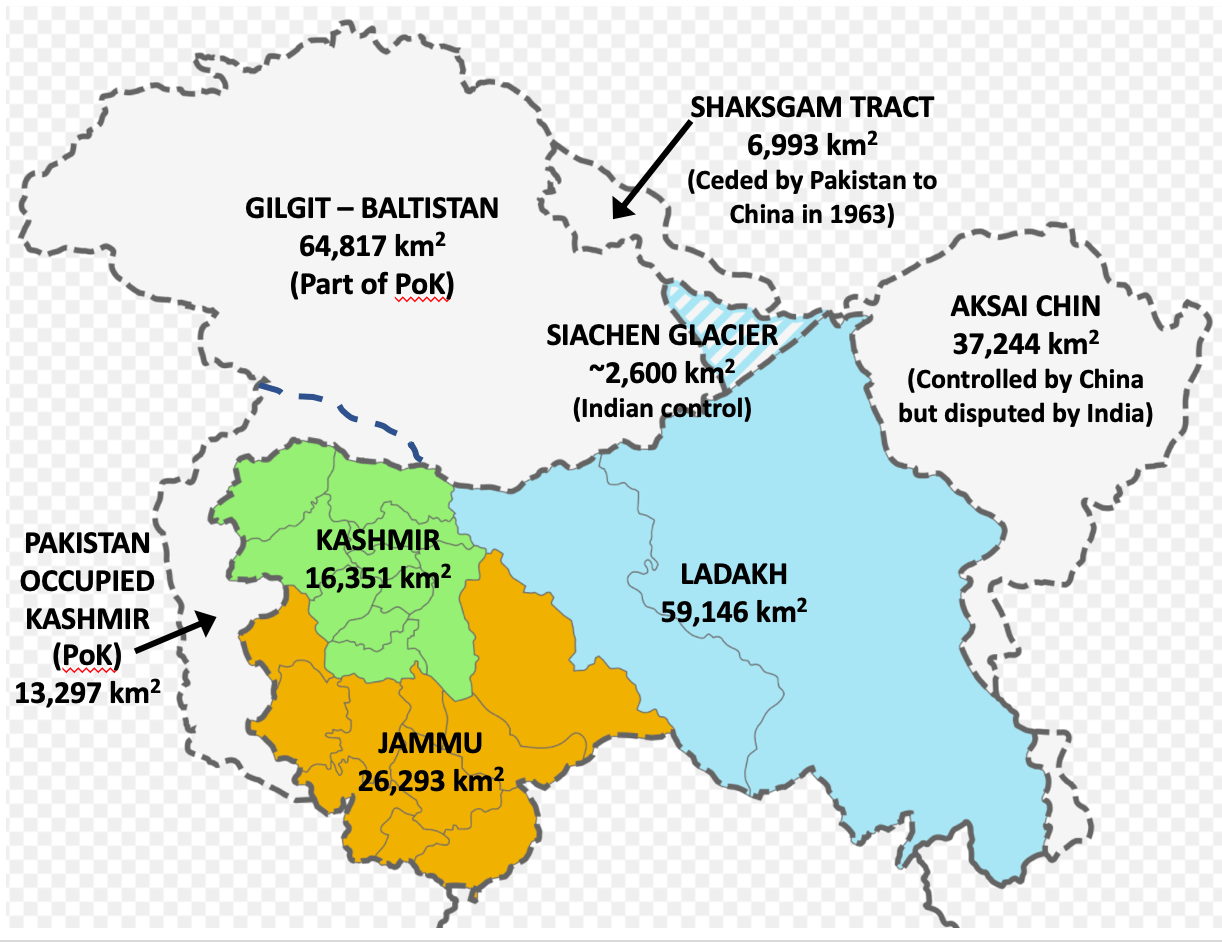
Importance of Ladakh
Rich in natural resources
- Ladakh is situated within the upper reaches of the Indus watershed, which in total supports about 1.2 million people in India and about 93 million in the Pakistan province of Punjab.
- Sustainable management of water resources in Ladakh is essential, not only for the livelihoods of Ladakhis and the ecosystems of Ladakh but for the health of the whole river system.
- Solar radiation: It is one of the most abundant natural resources in Ladakh, with annual solar radiation exceeding averages for other areas of India with high insulation.
Geothermal potential
- Surveys have identified a geothermal resource at depths suitable for exploration and development.
- This could be developed to provide grid-connected power to small settlements and army bases.
- Puga and Chumathang in Eastern Ladakh are promising geothermal fields in the country.
Tourism industry
- Popularly known as the Lama Land or Little Tibet, it lies at altitudes ranging between about 9,000- 25,170 feet.
- From trekking and mountaineering to Buddhist tours of various monasteries, Ladakh has it all.
Important Monastries of Ladakh
|
Provides connectivity
- The passes of the Ladakh connect some of the significant zones of the world like Central Asia, South Asia, and China
- Market access: South Asian countries can reach Central Asian markets through this region.
Energy security
- In future, the oil and gas pipeline from Iran to China can pass through this mountainous corridor.
- India’s energy needs can also be met by constructing a pipeline from Central Asia via this region.
Geopolitical Significance
- It is located on the ancient Silk Route, which played a very vital role in the development of culture, religion, philosophy, trade, and commerce in the past.
Geostrategic location
- The presence of resources is what makes India, China and Pakistan struggle over Ladakh in order to gain control over resources in this region.
- Pakistan and China are in conflict with India over Siachen and Aksai chin in this region.
{GS3 – Envi – Air Pollution} Super Pollutants
- Context (DTE): The Climate and Clean Air Conference 2024 started on February 21, before the sixth United Nations Environment Assembly (UNEA-6).
- It urged global cooperation to eliminate Super pollutants.
- UNEA-6 will be held in Nairobi.
Super pollutants
- They are short-lived climate pollutants, known as Super pollutants.
- Though they have a shorter atmospheric lifespan compared to CO2, they significantly impact climate change and air quality.
- It includes methane, black carbon, hydrofluorocarbons and tropospheric ozone.
- Existing agreements to remove super pollutants from the atmosphere: Kigali Amendment, the Montreal Protocol, and the Global Methane Pledge.
|
Significance of eliminating Super pollutants
- Helps combat global air pollution.
- Lowers health risks for children, notably reducing asthma cases.
- Protect crops from pollutants, like tropospheric ozone, enhancing global food security.
- Offer dual benefits: protecting public health and mitigating climate change.
- Crucial to limit global temperature rise to 1.5°C.
Way forward
- Include super pollutants in each country’s Nationally Determined Contributions or NDC.
- The world must quickly put plans into action that specifically address methane emissions.
- The funding needed to reduce methane emissions should increase by at least 3.5 times by 2030.
{GS3 – IS – Cybersecurity} State sponsored Cyber Warfare
- Context (IE): Large amounts of data from Chinese cybersecurity company have been leaked online.
- The company (I-Soon) was involved in collecting important digital information at home and abroad, covering countries such as India, Nigeria, Indonesia, and the United Kingdom.
- I-Soon, a Shanghai-based company, is thought to be among many private contractors aiding the Chinese state.
- These contractors assist in intelligence-gathering, hacking, and other surveillance activities.
- The leaks confirm the significance of the Chinese state’s cyber intelligence and cybersecurity apparatus.
- This is not the first time; in 2020, the Indian Express investigation found a Shenzhen-based company linked to the Chinese government monitoring over 10,000 Indian individuals and organisations.
What’s in the leaked data?
- One spreadsheet listed 80 overseas targets successfully breached by iSoon hackers. This included,
- 95.2 gigabytes of immigration data from India.
- 3-terabyte collection of call logs from South Korea’s LG U Plus telecom provider.
- 459GB of road-mapping data from Taiwan was listed.
- Within China, the targets seemed to include ethnicities and dissidents in parts of China that have seen significant anti-government protests (Uyghur Muslims).
- The information also reveals the hacking tools used to find identities on social media platforms and access emails.
- I-Soon had the capability to hack X (Twitter) accounts, even with two-factor authentication.
- Devices resembling batteries were used to attack Wi-Fi networks.
{GS3 – S&T – Defence} Grey Warfare
- Context (TH): Chief of Defence Staff discussed about Grey-zone warfare during the Raisina Dialogue, organised by the Ministry of External Affairs and the Observer Research Foundation.
- The term grey zone gained prominence from events in the South China Sea and India’s northern borders.
What is Grey-zone warfare?

- The grey zone represents activities between peace and war, including illegal economic activities, cyberattacks, and disinformation campaigns to destabilise a target state.
- it involves military actions below a certain threshold to avoid immediate response.
- State and non-state actors use non-military tools, targeting vulnerabilities to weaken adversaries.
- The benefits of such actions may only become apparent over time.
- Initiating grey-zone warfare often requires exploiting historical disputes for success.
- When engaging in grey zone actions, like China in the South China Sea, the actions are openly justified using legal and political arguments.
- Aggressors also seek support from other countries, even if their claims’ international legal standing is questionable.
{GS3 – S&T – Space} Odysseus Landing on Moon
- Context (IE): The Nova-C lander module, part of Odysseus, has achieved the remarkable feat of landing in the Moon’s south pole region. This accomplishment follows Chandrayaan-3‘s success in the same region last year.
- Also, this is the first moon landing by a private company.
- This is the third moon-landing event within a year, after Chandrayaan-3 and Japan’s SLIM (Smart Lander for Investigating Moon).
- The recent landing on the moon is a part of the United States’ commitment to return to the moon through the Artemis program.
|
Significance
- The successful landing of Odysseus signals a fresh start in Moon exploration, focusing on building infrastructure and a technological ecosystem to sustain a prolonged human presence.
- Space voyage began with Sputnik 1 in 1957.
- The Soviet Union’s Luna 9 achieved its first moon landing in 1966.
- Apollo 11 marked the first human landing on the Moon, occurring.
- Despite these achievements, a technology ecosystem for sustained exploration and resource utilisation has not been established.
- The Artemis program relies on private and commercial space agencies for crucial support.
- NASA collaborates with private companies through the Commercial Lunar Payload Services (CLPS) initiative, delivering equipment and technology to the Moon.
{Prelims – Envi – Species} Asian Giant Softshell Turtle (Pelochelys Cantorii)
- Context (NDTV): “Incredibly Rare” Cantor’s Giant Turtle was found In Kerala.
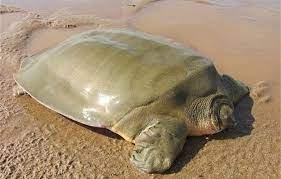
- The Asian giant softshell turtle, commonly as Cantor’s giant softshell turtle and the frog-faced softshell turtle, is a species of freshwater turtle.
- The species is native to South and Southeast Asia.
- Physical Appearance: The turtle has a broad head and small eyes close to the tip of its snout. The carapace is smooth and olive-colored.
- Behaviour: The turtle spends 95% of its life buried and motionless, with only its eyes and mouth protruding from the sand.
- Habitat: Lakes, rivers, estuaries, seacoasts, and occasionally in coastal marine waters.
- Range: Bangladesh, Brunei, Cambodia, China, India, Indonesia, Laos, Malaysia, Myanmar, Philippines, Singapore (extirpated), Thailand, Vietnam
- Diet: Primarily carnivores (piscivores) feeding on fish, crustaceans, and mollusks. They may also supplement their diet with some aquatic plants.
- Conservation Status: IUCN: Critically Endangered (CR) | WPA: Schedule I | CITES: Appendix II
- Threats: Illegal Poaching, Habitat destruction, etc.
{Prelims – In News} T-50 Tunnel
- Context (TOI): India’s longest transportation tunnel T-50 on Udhampur-Srinagar-Baramulla rail network was inaugurated.

- T-50 is a 12.77 km-long tunnel situated in the Khari-Sumber section.
- It enables trains to operate seamlessly from Baramulla to Sangaldan via Banihal.
{Prelims – In News} Turha
- Context (IE): The Election Commission has allotted the election symbol “Man Blowing Turha” to the Nationalist Congress Party (NCP) faction led by Sharad Pawar.

- The turha is also pronounced and written as turhi, turahi, or turturi.
- The instrument used to be made of bullock horns before metal became common.
- It is usually played almost exclusively by men, the majority of whom have learnt the art over generations.
Historical significance of blowing of Turha
- In an earlier age, the ceremonial blowing of the turha heralded the arrival of kings, nobles, and other high dignitaries.
- In Maharashtra, the turha was a popular instrument in the court of Chhatrapati Shivaji Maharaj.
- The tutari was played as a salute during the reign of the Adilshahi kings of Bijapur (1490-1686).
- The blowing of the turha heralded the beginning of preparations for a significant journey or work, as well as of battle.
- It was also blown to signal the beginning and the end of combat.
Turha in modern times
- Today, the instrument is often used at weddings or other happy occasions, and at political rallies in Maharashtra.
- The turha was blown as a rallying call at the farmers’ protest of 2020-21.
- The instrument has featured on the Chhattisgarh float at the Republic Day parade and is played as a ritual musical instrument in Nepal and Sri Lanka as well.





![PMF IAS Environment for UPSC 2022-23 [paperback] PMF IAS [Nov 30, 2021]…](https://pmfias.b-cdn.net/wp-content/uploads/2024/04/pmfiasenvironmentforupsc2022-23paperbackpmfiasnov302021.jpg)


